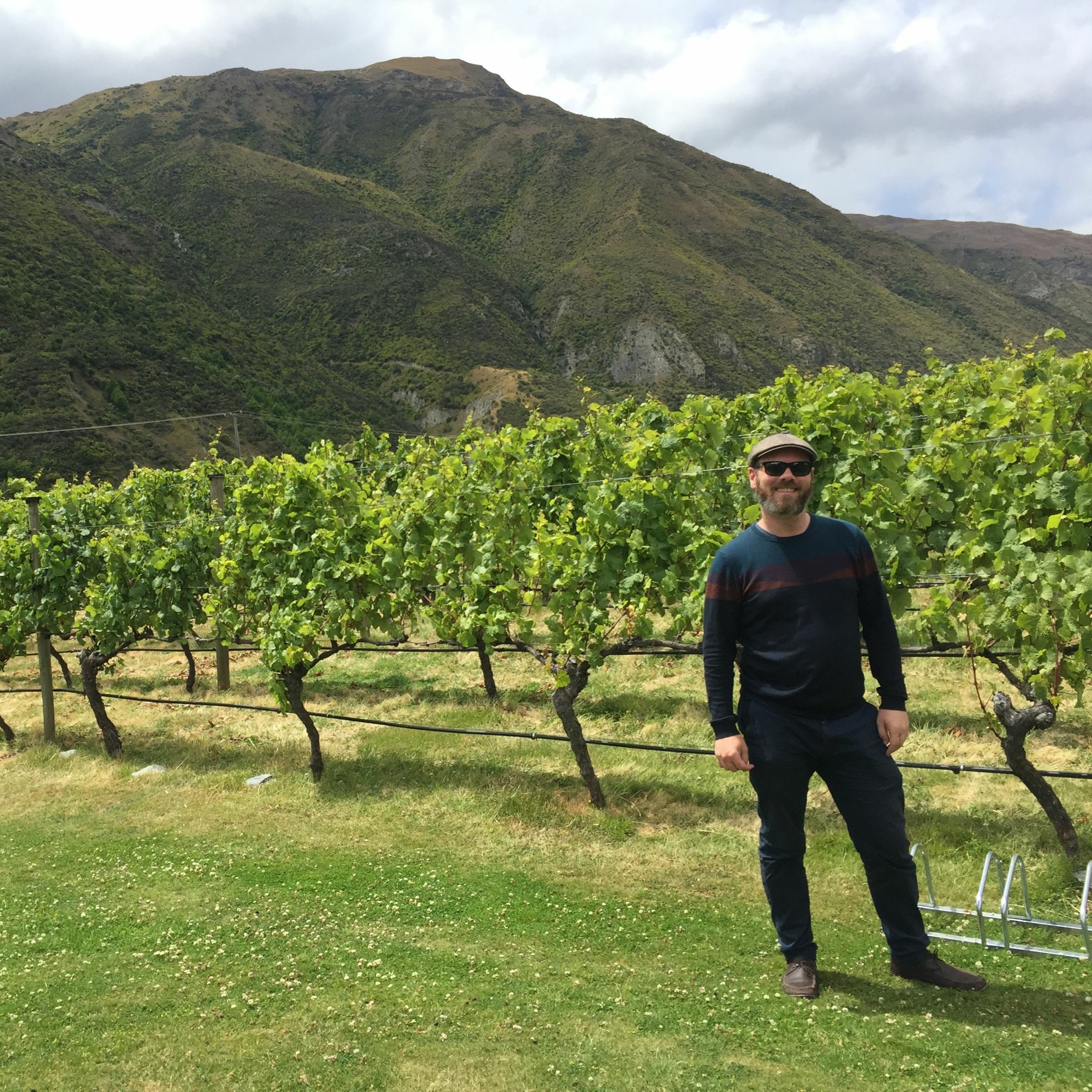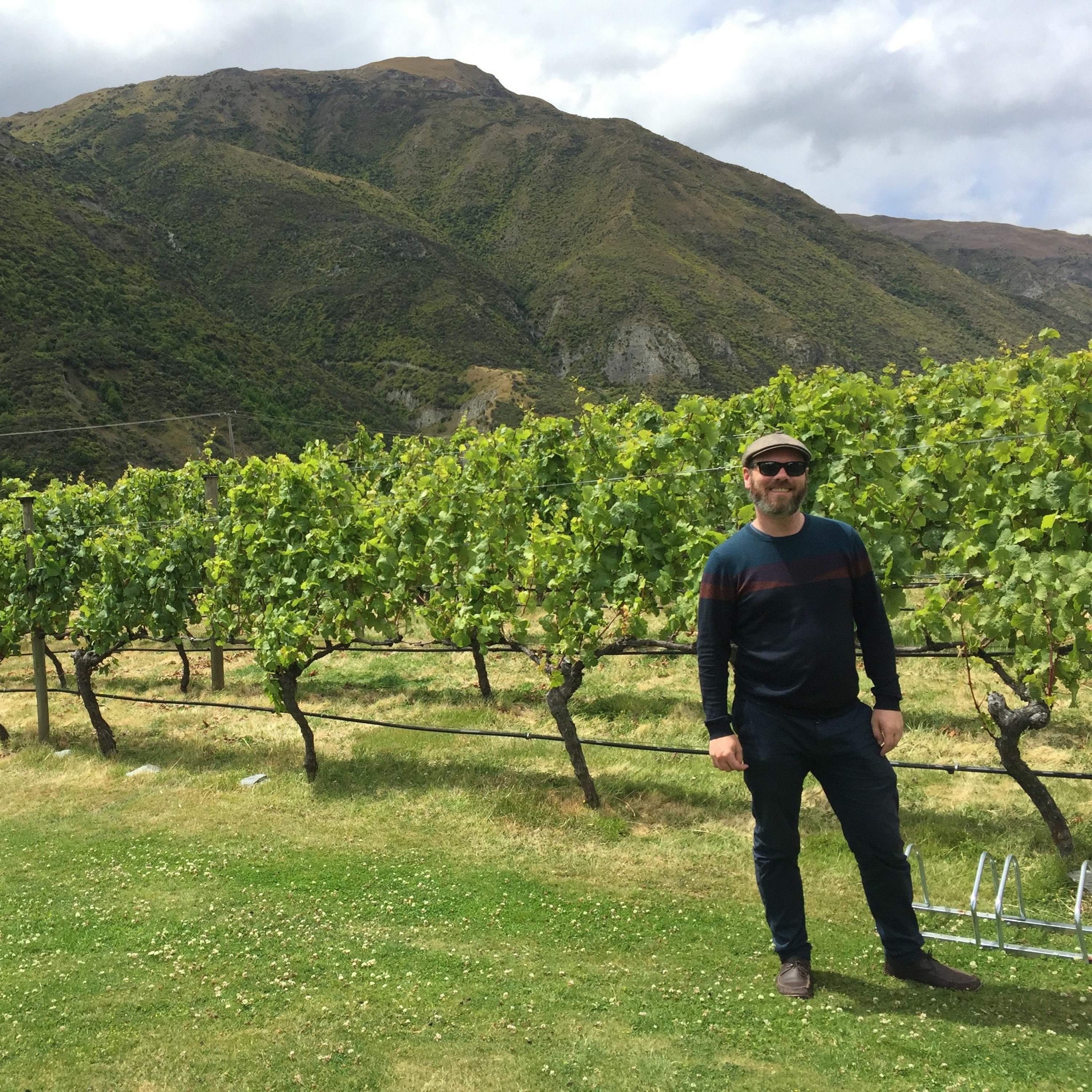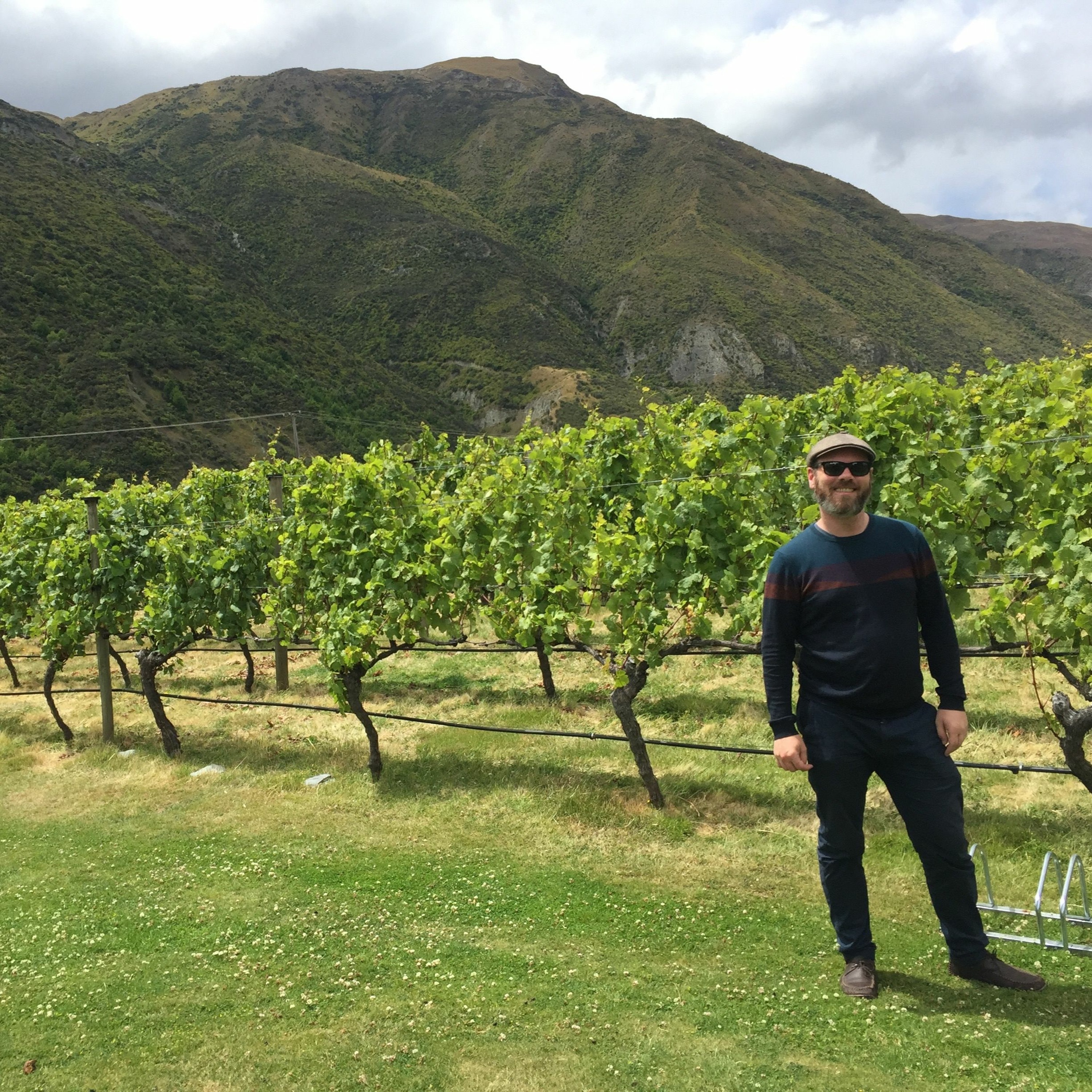Discover Matthew's World of Wine and Drink
Matthew's World of Wine and Drink

Matthew's World of Wine and Drink
Author: Matthew Gaughan
Subscribed: 203Played: 8,256Subscribe
Share
© All rights reserved
Description
An Englishman in California soaking up the sun, I am a WSET Diploma graduate and Certified WSET Educator. I blog about wine, teach it at all levels, and drink plenty of it. Follow me on twitter @mattswineworld or check out my website: matthewsworldofwineanddrink.com
193 Episodes
Reverse
Interview with Rui Lucas of Prior Lucas in Bairrada, Portugal. It's a region heavily influenced by the Atlantic Ocean, and therefore cooler and wetter than other areas further inland. Baga is the main variety, well-suited to the humid climate, producing tannic, high-acid, ageworthy wines. There's also sparkling wine made, which we talk about in this episode. Bairrada is an interesting, very individual region!
https://priorlucas.pt/
Interview with Peter Andrews of Culture Wine Co, who's importing South African wine into California. Topics covered include Pinotage; Mediterranean varieties; Sauvignon Blanc; the regionality of South Africa; innovative winemakers; racial diversity; and future trends for South African wine.
The Michigan wine scene is relatively new, growing in the last few years. I speak to Drew Perry of Simpson Family Estates, who started in 1980—dicsussing the growing conditions, the grape varieties, and the wines of the emerging industry.
Gamay: a high-yielding variety associated with youthful, fruity wine but which, in the right growing conditions, makes wonderful, structured wines. This episode explores the areas where Gamay is grown: Beaujolais of course as well as Loire, Savoie, Lorraine, Switzerland, the US, and New Zealand.
Winemaking in Armenia goes back at least 6,000 years, one of the starting points of viticulture. But it's only in the last ten to fifteen years that there has been a renaissance in quality wine. Vahe Keushguerian has been at the forefront of this renaissance, both in his own projects and for other fledgling wineries. In this episode, he explains all about Armenian wine—history, geography, grape varieties, styles of wine, and where the industry is heading.
Brazil's wine industry has gone through many changes since the 1990s, and is still finding its feet. The focus on quality wine began with sparkling wine, with investment from French producers, and has continued with a focus on grape varieties such as Tannat. The climate changes drastically from region to region, and grape-growing can be difficult. My interview with winemaker Flavio Pizzato explores why Brazil is quite different from other South American wine countries.
Brad Hickey has been making wine in McLaren Vale for over fifteen years, in a range of styles that reflect the Mediterranean climate of the region. This episode focuses on his experiences in McLaren Vale, and the wines being made there. A great insight into one of Australia's most historic but experimental wine regions.
A conversation with Garth Hodgdon of Cage Imports, which imports 15 small Champagne producers into the USA. We talk about trends in Champagne, how to discover those small producers (and who they are), who's drinking champagne, and why Meunier rocks!
Visit Cage Imports: https://www.cageimports.com/
Plantings in Mexico date back to the 1520s, although the development of the wine industry was curtailed by Spanish colonial intervention. Since the 1980s, there has been a renaissance for Mexican wine, with many regions emerging. In this episode, I interview Stephen Ott of Nossa Imports about the wine regions of Mexico, the grape varieties, the styles of wine, and the potential future of Mexican wine.
Connect with Stephen at Nossa Imports: https://www.nossaimports.com/
Georgia is one of the world's oldest winemaking countries. Traditions—such as amber wine and wine made for home consumption—continue, which make Georgian wine a wonderful trip to the past. But it's also an evolving wine country, with regions producing different expressions from the many local grape varieties. In this episode, I interview Tom Williams of Eat This! Food & Wine Tours, who specialises in explorations of Georgian wine and provides a fascinating insight into Georgian culture.
If you're visiting Georgia, then connect with Tom through his website: https://eatthistours.com/
Interview with Mari Jones of Emeritus Vineyards in Sonoma County, who began the conversion to dry farming in 2008. In tandem with the selection of suitable clones and rootstocks, the vineyards are now well-established without the need for irrigation. Mari tells how they oversaw the conversion and the consequent health of the property.
Celebrating its 50th anniversary, Long Island has unique growing conditions heavily influenced by the Atlantic Ocean. I interview three producers: Jenny Smith from Pellegrini (on the North Fork), Roman Roth of Wölffer Estate (in The Hamptons), and Jonathan Romberg of RGNY (a much younger winery also on the North Fork). Our conversation explores the growing conditions, the styles of wine, and the market for Long Island wines.
Wine has been made in Albania for thousands of years, and grape-growing used to be central to its culture before rule by the Ottoman Empire and then an isolated communist regime led to a centuries long decline in wine production. It's still a predominantly agricultural country and winemaking is coming back, with international varieties and interesting, largely unknown indigenous grapes.
Two neighbouring countries, formerly of Yugoslavia. Kosovo's winemaking history goes back 2,000 years, with a renewed focus on quality after the bulk wines under Yugoslavia. Montenegro has one of the largest vineyards in Europe, with research into indigenous varieties and how best to develop them to advance the country's wine culture. Lots of history, with exciting potential for the future.
The small, landlocked country of North Macedonia has a long winemaking history. The source of much of the former Yugoslavia's bulk wine, there is a renewed focus on quality in identifying the best sites. This episode prevents an overview of the growing conditions, the grape varieties, and the styles of the wines.
Episode number four on the wines of the former Yugoslavian countries. Serbia's climate is continental, influenced by the river Danube and by mountains. There are some international varieties planted, but also indigenous varieties and some local crossings. Only 5% of wine is exported and the industry is quite fragmented, but the wines are of increasing interest and well worth exploring.
Part 3 of series on the wines of the Balkan States and former Yugoslavia: Bosnia-Herzegovina. A small wine industry, with just 3,500ha of plantings but 11,000 growers. The main regions are around Mostar between the Adriatic Sea and high central mountains. It's still not a fully regulated industry, but there are a number of indigenous grape varieties which make the wines of current and future interest.
Episode 2 of my series on Balkan wine: Croatia. A beautiful country which attracts two and a half times as many tourists as residents, the wine regions can be divided into coastal and continental inland. There are some similarities with nearby Slovenia, Italy, Austria, and Hungary, as well as international varieties and those unique to Croatia. A fascinating wine country which is rightly gaining some more attention.
First episode on the wines of the Balkan States, starting with Slovenia, a country with lots of connections with neighbouring regions of Friuli in north-east Italy and Steirmark in southern Austria. The climate changes from Mediterranean on the coast to continental further inland, leading to a variety of styles. There's also the tradition of skin-contact white wines, which has been influential around the world. A country whose wines are well worth exploring.
250 indigenous varieties plus a handful of international; different names for the same variety, named after animals, people, and often hard to pronounce; field blends in a small, fractured vineyard ownership; maritime and continental climates: for such a small country, Portuguese wine is hard to pin down, but an understanding of the varieties helps. Here's an overview of some of the major white and black varieties and the regions they're grown in to gain a sense of Portuguese wine.



















